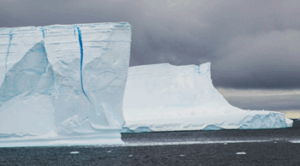Alouestes – Stage 6 : A track in the desert
On May 3rd, 2023, Tiphaine and her travelling companion Glen, landed in Anchorage, Alaska, 7,500 kilometres west – or Alouestes – of France.
Since then, they have been cycling between the Rocky Mountains and the Pacific Ocean, heading south towards a destination that is still unknown. From stage to stage, the duo stopped at breathtaking places, well preserved or, instead, threatened by human activities. From the frozen ground in the Yukon Valley (Canada), to the deserts of Baja California (Mexico), via the glaciers and forests of British Columbia (Canada), Tiphaine and Glen’s journey is not just a human adventure, but also a scientific one.
In this sixth episode of Alouestes, quoi de nouveau?, the ecologist Lynn C. Sweet, from the Center for Conservation Biology at the University of California Riverside, warns of the fragility of the deserts of southern California and the loss of biodiversity in these regions, which are richer than we think.
Which ecosystem services provided by deserts are at risk of disappearing? How are humans and climate change threatening these areas?
« We know that each spring may be the last of its kind and may be broken again by an historic drought », says ecologist Lynn C. Sweet from her office at the Center for Conservation Biology in Palm Desert, two hours east of Los Angeles.
This research unit at the University of California Riverside focuses on the conservation and restoration of desert ecosystems: « It’s a real challenge: most of the time, the land here seems to be empty, bare. So people think that building houses and installing solar power is no big deal. But you have to understand the importance of biodiversity in the desert: it’s actually very rich, even compared with forests », continues the researcher.
Rapid urbanization, the installation of solar panels and deposits of nitrogen oxide (NOx) caused by atmospheric pollution from the nearby Greater Los Angeles area are particularly affecting arid soils. Caliche, a very fragile biological layer of compacted sediment made up of fungi and bacteria, crumbles. And once it is destroyed, the soil erodes. This layer also represents a natural carbon sink: « if you damage the soil surface, this carbon will be released back into the atmosphere. This is another desert ecosystem service », says Lynn C. Sweet.
Save the « Yucca brevifolia »
An important part of his team’s work involves a close collaboration with nature parks and local associations involved in the protection and management of desert vegetation and wildlife.
« There are plants and animals that completely avoid drought as they hibernate and hide underground during the dry season. They then come back to life when it rains, in winter and spring, when it gets cooler », explains the ecologist. Even though these species adapt very well to the heat in the arid regions of the south-western United States and western Mexico, they are unable to withstand the extreme temperatures caused by global warming.
According to Lynn C. Sweet, the best way to limit the damage is to get people more and more involved. To do this, it is important to have beautiful examples of nature: « People care about Joshua trees (Yucca brevifolia), for example. The fight against climate change often comes down to what we care about and what we would like to save. It’s a good way of inspiring people to take action! »
From the iconic Joshua Tree National Park to the semi-arid plains of the Baja California peninsula in Mexico, the sixth stop on Alouestes takes you on a journey of discovery of North American desert ecosystems!
Photo Gallery
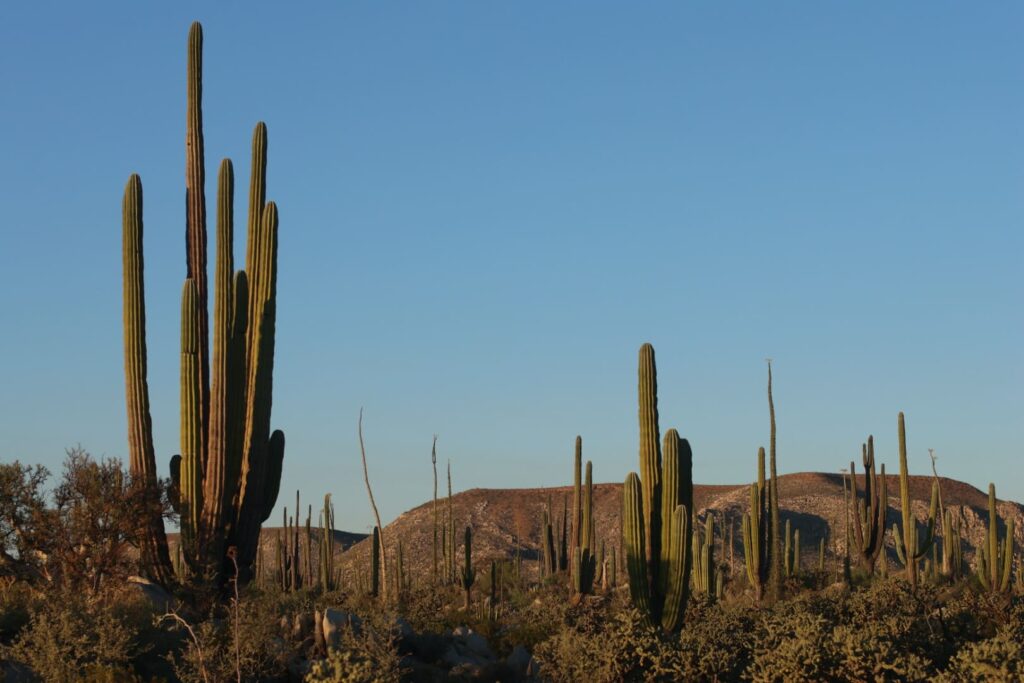
View of the Baja California desert, near Cataviña, Mexico. © T.Claveau, 24 September 2023.
We can see a sort of basin, home to organ pipe cacti and Boojum trees. As the climate and landscape become increasingly dry and hot, these basins offer hydrological refuges for species, due to the evaporation of the water that trickles down here like a funnel. These areas are also fantastic corridors for flora and fauna, where coyotes, for example, can migrate.
– Lynn C. Sweet
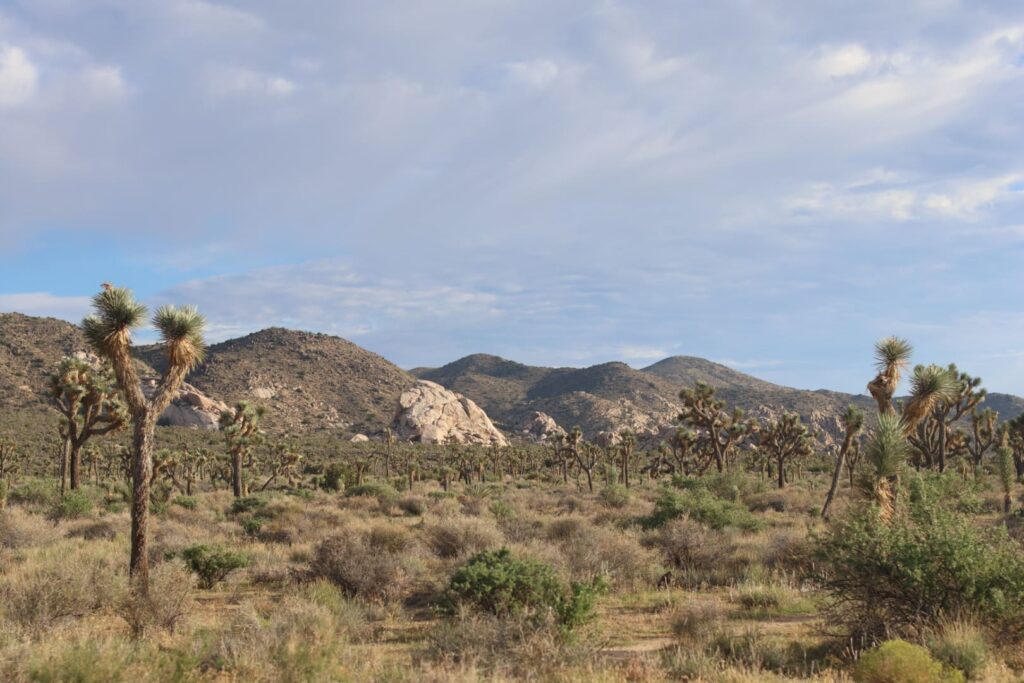
View of Joshua Tree National Park, where the eponymous tree, a species of Yucca, survives in extreme conditions in the Mojave Desert. © T.Claveau, 11 September 2023.
Joshua Tree National Park stretches from the Sonora Desert up to the Mojave Desert: a transition zone rich in biodiversity. The Joshua Tree – Yucca brevifolia – is still a candidate for listing under California’s Endangered Species Act. Although this tree adapts well to droughts, it tends to change slowly and in the long term it could almost disappear. In 2019, we modeled its evolution based on the IPCC scenarios: from a moderate mitigation scenario to a “business as usual” scenario. Results: in the first case, we could see an 80% decrease in the habitat of Yucca brevifolia within the park, while in the second, only 1% of the land would be suitable for this tree.
– Lynn C. Sweet
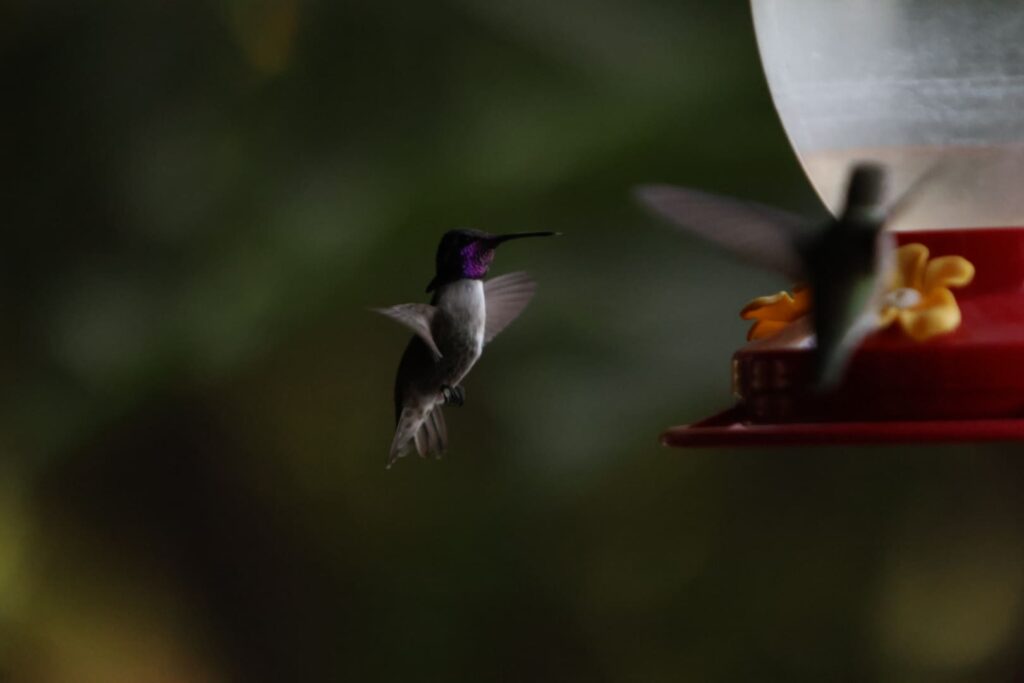
Anna’s hummingbird (left) and Xantus’s hummingbird (right) looking for nectar from a hummingbird feeder at the home of a resident of Mulegé in the Baja California desert, Mexico. © T.Claveau, 2 October 2023.
There are two species of hummingbird in the photo. The Xantus hummingbird is endemic to southern Baja California. The other, the Anna’s hummingbird, migrates between the United States and Mexico. In order to protect their habitat we have to be careful about the amount of land cover that is being converted in other uses. Despite this, these two birds can survive in certain suburban landscapes.
– Lynn C. Sweet
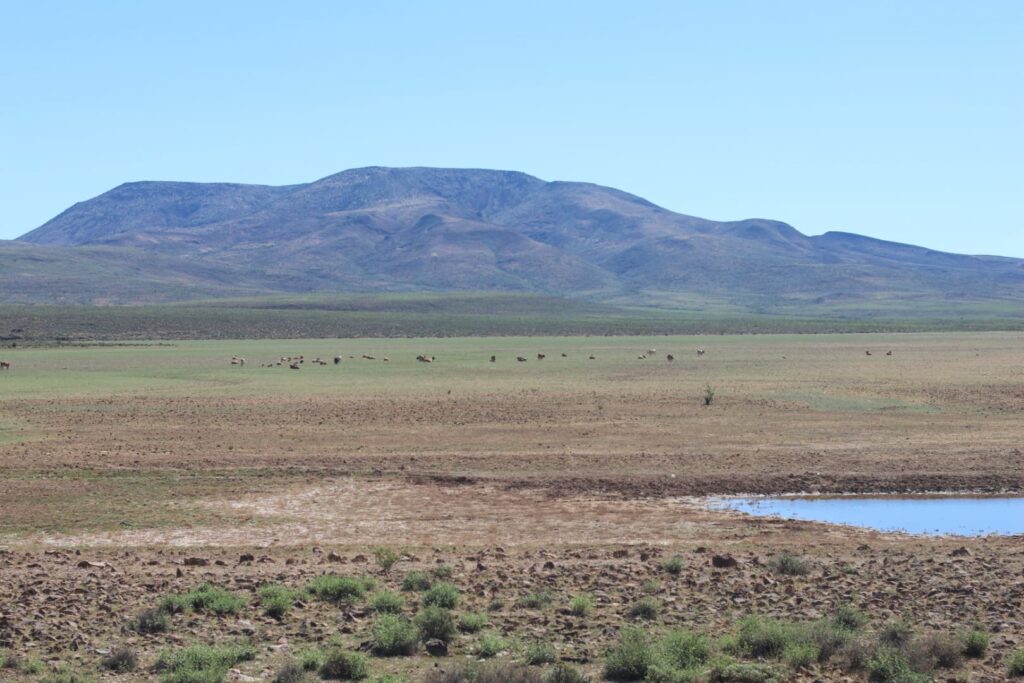
Cattle on the plains of the Baja California desert near El Rosario, Mexico. © T.Claveau, 25 September 2023.
There is a long history of ranching and grazing in these areas. However, grazing is not always compatible with certain landscapes: it can degrade the plant cover, as the animals graze selectively, which alters the plant community and the soil. We see cows, but there are also people who live near them, and these people don’t necessarily have the help and information they need to practise livestock farming in a sustainable way.
– Lynn C. Sweet
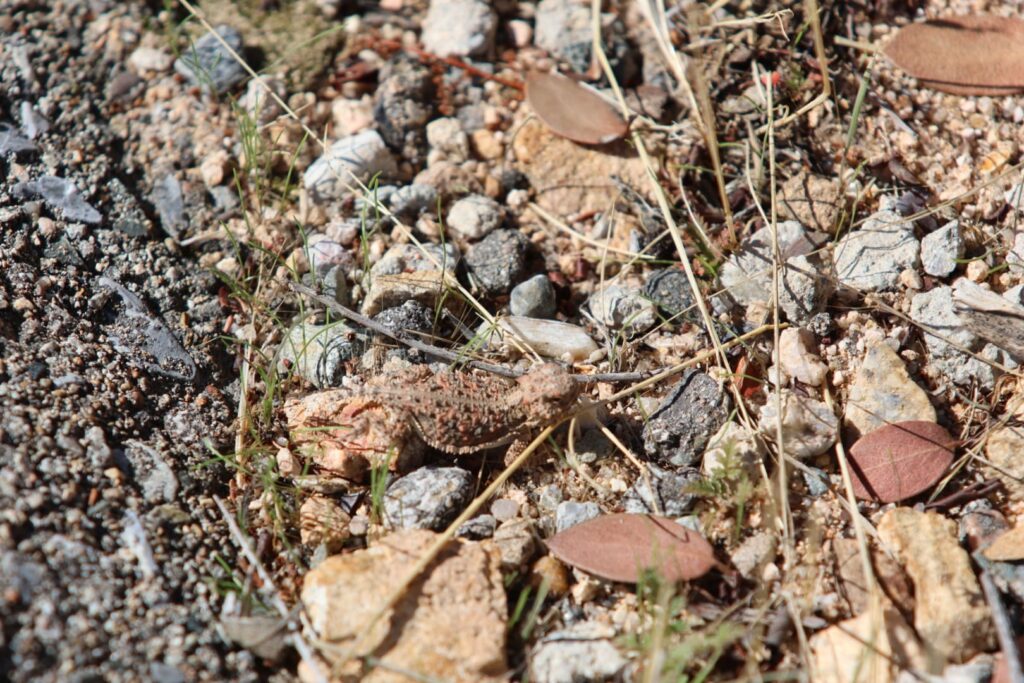
Blainville’s horned lizard, or Phrynosoma blainvillii, is a species native to southern California and the northern Baja California peninsula in Mexico. Colorado Desert. © T.Claveau, 14 September 2023.
This lizard occupies a slightly cooler zone in the desert: at upper elevation, where there are shrubs and a few trees. Because of its narrow habitat, it is a vulnerable species. The Phrynosoma blainvillii feeds mainly on harvester ants: any impact on the food source also has repercussions for the lizard. On the other hand, rising temperatures could reduce the period of daily activity during which the lizard feeds.
– Lynn C. Sweet
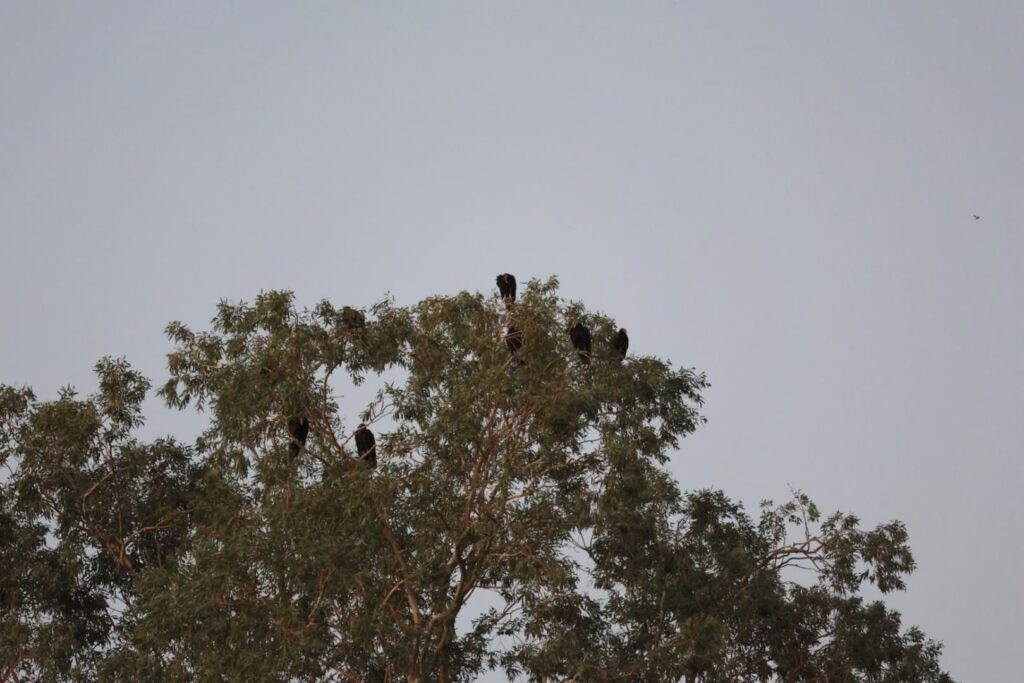
A group of Turkey Vultures on a tree in Joshua Tree National Park at dusk. © T.Claveau, 12 September 2023.
Turkey vultures migrate over long distances through a narrow strip of southern California, they funnel through the Borrego area. The vultures are abundant, they are part of the ecosystem and feed only on dead prey. They never kill.
– Lynn C. Sweet
Find out more
- The first part of Alouestes, Étape 1 : Les sols en dégel entre l’Alaska et le Canada, with scientist Antoine Séjourné.
- The second part of Alouestes – Étape 2 : La grande fonte des glaciers nord-américains, with glaciologist Etienne Berthier.
- The third part of Alouestes – Étape 3 : Dans le sillage des grands feux, with Karen Hodges, conservation biologist and ecologist at the University of British Columbia in Kelowna (Canada) and Juan Cuesta, an atmospheric physics researcher at the Laboratoire Interuniversitaire des Systèmes Atmosphériques (LISA-IPSL).
- The fourth part ofAlouestes – Étape 4 : Through the breadbasket of the United States, with Josué Medellín-Azuara, Associate Professor in the Department of Civil and Environmental Engineering at the University of California, Merced (USA) and Nicolas Vuichard, CEA researcher at the Laboratoire des Sciences du Climat et de l’Environnement (LSCE-IPSL).
- The fifth part of Alouestes – Étape 5 : Between the dunes and cliffs of the west coast, with Judith Gauriau, doctoral student at the University of Southern California (USC) and Gonéri Le Cozannet, coastal risk specialist at BRGM and co-author of Part II of the 6th IPCC report.
- Follow Tiphaine & Glen’s path on Instagram or take a look at their travel blog Alouestes !



